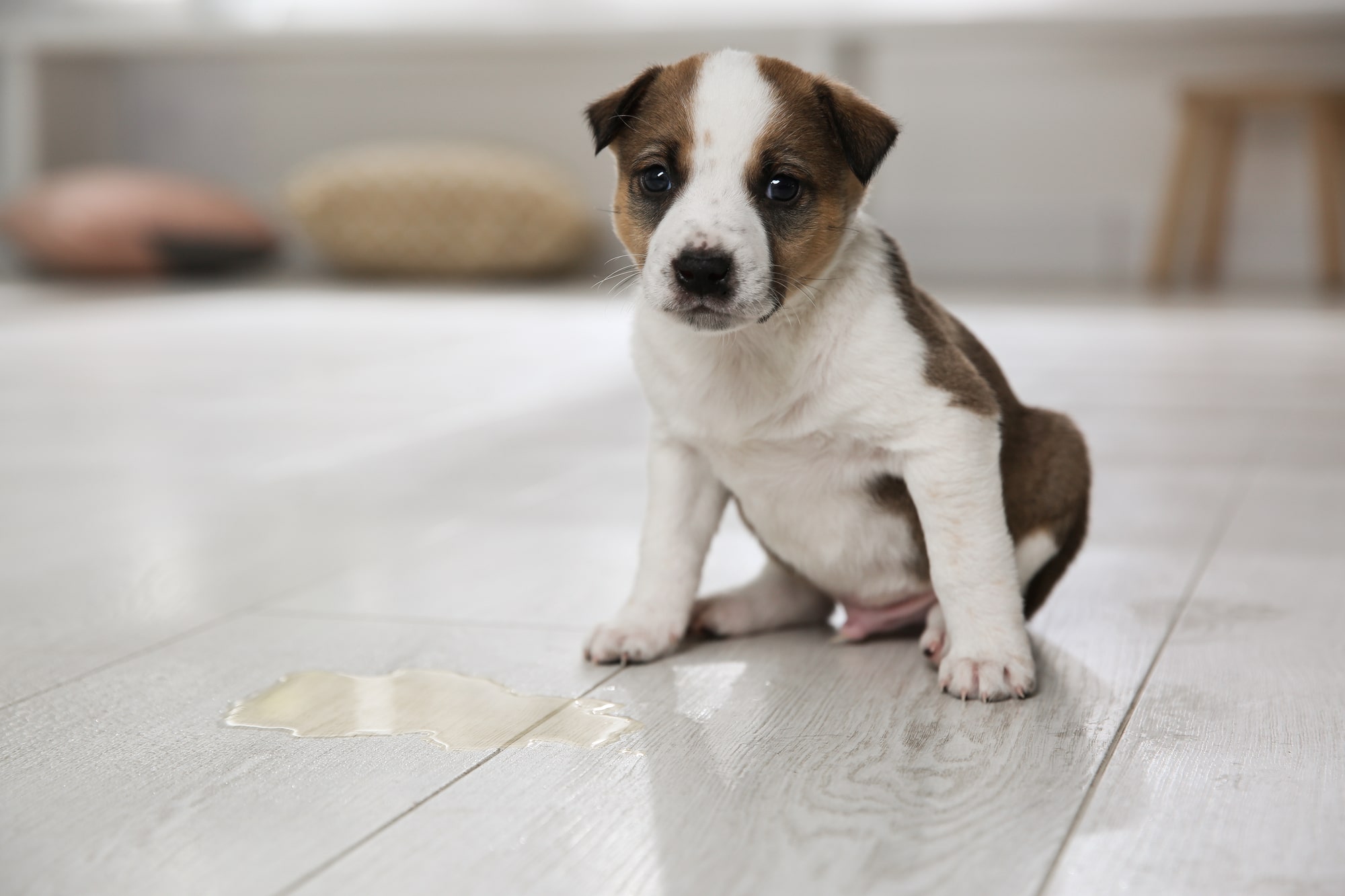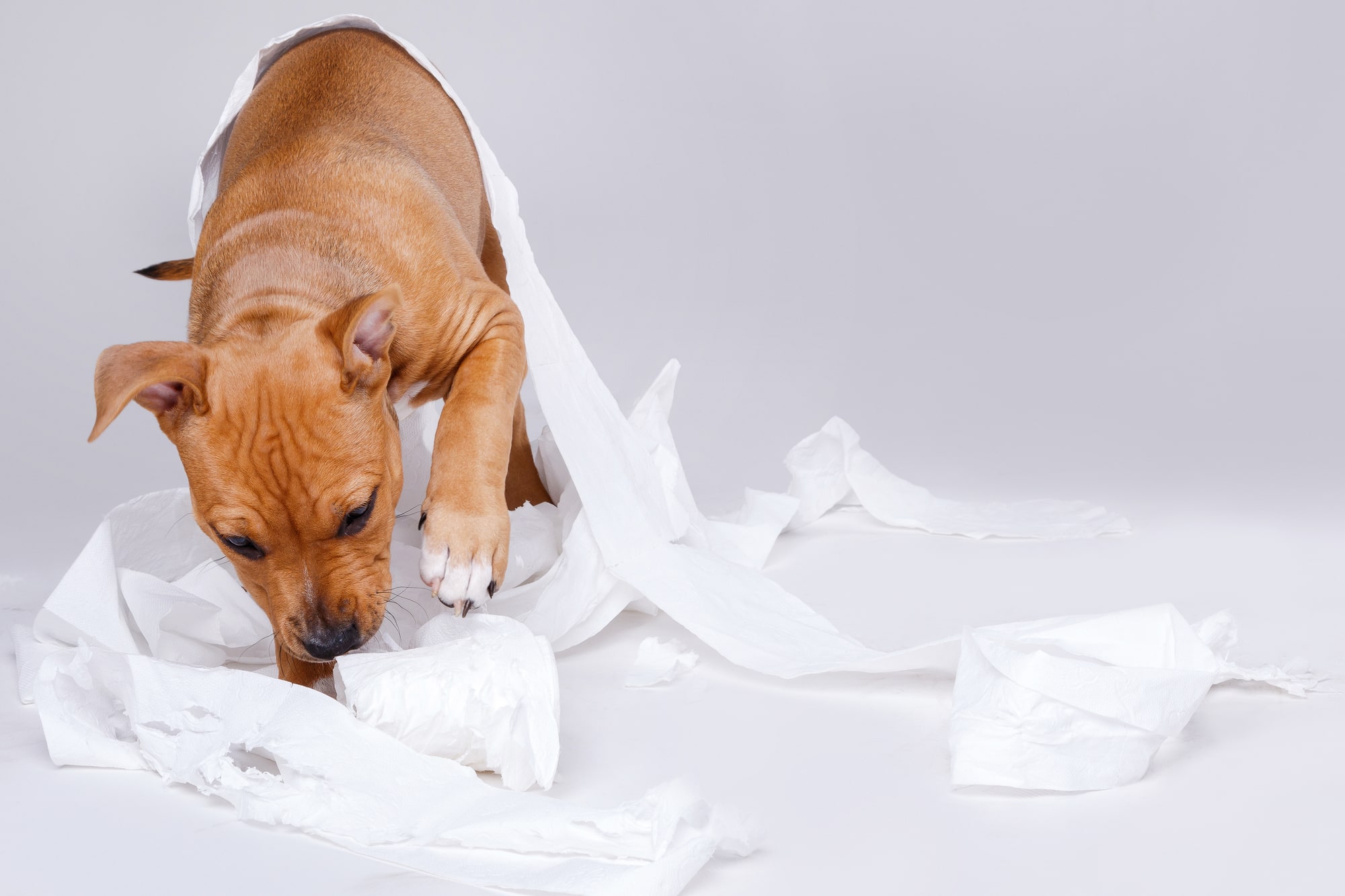
Potty training a new puppy is not necessarily for the faint of heart, but it must be done to ensure your house stays clean. Given this fact, puppy potty training is one of the most important things you’ll do with your new addition. This means you want to get it right the first time. The thing to remember about potty training a puppy is that it requires immense patience and consistency. These are the two keys to success in accomplishing house training for your pup.
You and your pet are happier when the rules of potty breaks are understood and followed. One of the most vital things to remember as you embark on this process is that puppies naturally see the world around them as their potty area until you teach them otherwise. Regular walks, proper potty time supervision and heaps of praise are the foundation for successful potty training.
Gather a Few Potty-Training Supplies
As with most tasks involving your new dog, you’ll need a few things before you start to potty-train. A few essentials include:
- Puppy pads
- Collar
- Two leashes (preferably a hands-free, non-retractable option that stretches out at least three to four feet and one that stretches out up to 15 feet)
- Dog litter box
- Plenty of dog treats
- A good mop and floor cleaning product
- Carpet cleaner
Decide on Your Management Style for Potty Training
Until your dog knows the ropes regarding potty breaks, they’ll need to be managed and supervised in some way. Therefore, you need to determine what your puppy management set-up will be.
Tethering
Tethering your puppy allows them to operate within a specific predetermined boundary. For example, many people prefer to keep their pups in a tiled area of the home, using a tether to limit how far they can venture off. This ensures any accidents are easily cleaned up from tile instead of carpet.
Confinement
Some people prefer to keep their new puppy confined to a specific area while still allowing them to roam this space freely. Confinement relies on puppy gates or other physical boundaries your puppy can’t bypass. You can then put pads in this area to encourage your puppy to go on the pads if they can’t hold it.
Crate Training
Those who opt for crate training typically do so from the outset of having a new pup in the house. Choose a crate that offers enough space that your puppy or adult dog can turn around and lie down freely. However, don’t get one that’s too large, as you don’t want your dog to be able to use the bathroom in one area of the crate and then comfortably sleep on the opposite end.
Create a Potty Break Schedule
A schedule is critical to successfully potty-training a puppy. Once you set the schedule, stick to it until you’ve reached various milestones.
Start With Frequent Walks on a Leash
The first step to potty-train a puppy is a regular walk every 30 to 60 minutes on a leash. This may initially seem excessive, but getting them used to the leash is imperative as it’s a critical instrument in the potty-training process.
Set a Timer for Your Pup to Go
Give your puppy five to 10 minutes to use the bathroom. Try not to make any noise or move, as this may distract your dog from the mission. Keep your eyes on them the entire time so you can quickly praise them once they go.
Unleash the Praise If/When They Go
Once your dog has finished pottying, unleash tons of praise and offer a few treats. Wait until they’re finished going before you do this, as you don’t want to distract them and risk them going inside.
Take Your Pup to a Designated Space If They Don’t Go Within the Predetermined Period
It takes some dogs longer than others to get the hang of this process. If your dog doesn’t go, don’t get frustrated. Take them to a designated area of your home with potty pads in place for 10 to 20 minutes so they don’t try to go elsewhere. The more you repeat this process, the quicker they’ll get potty-trained. Meanwhile, the use of a potty pad will help control the mess.
Give Your Pup Off-Leash Time If They Were Successful
You don’t want your dog to associate the outdoors solely with potty time. The idea is to show them that once they do their business, there’s plenty of opportunity for fun and exploration outside. If your dog successfully used the bathroom on their potty break, give them some off-leash time if you’re in a safe area. This teaches your pup that pottying leads to fun.
Repeat This Process Throughout the Day
Repeat this process several times each day. Potty-training success depends on the dog’s breed and age. An adult dog is likely to fall in line faster than a puppy, so you may need to repeat this process numerous times over a few weeks for your dog to get the hang of it.

Additional Tips for Potty Training Puppies
There are a few additional tips to keep in mind when getting young puppies used to potty training. They might help if you feel overwhelmed by the prospect of teaching your dog where and when to go.
Create a Chart of Your Puppy’s House Training Process
If you’re a hyper-organized person, a chart might help track what’s worked and what hasn’t. This is also an excellent way to see where you are in the puppy training process from a visual perspective. Note what conditions are more likely to spur your pup to go, where they prefer and what praise/treats work best for encouragement.
Start a Feeding Schedule
If your puppy isn’t responding well to a regular potty break schedule, use a feeding schedule to learn when your dog is most likely to need to go potty. This will help you anticipate necessary breaks. You might also take your puppy out after it has a drink or wakes up from a nap.
Clean Potty Accidents Thoroughly
If your puppy has an accident in the house, clean it up as thoroughly as possible. When pups smell places they’ve pooped or urinated in the past, they’re more likely to go there again. This is especially true of very young puppies.
Potty training your puppy can be laborious, but once you have it down, you and your dog can spend more time getting to know one another. It’s worth the effort and consistency necessary to house-train your pup, and your relationship with one another will be better for it.
